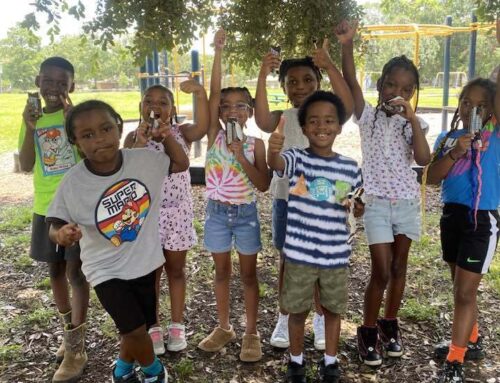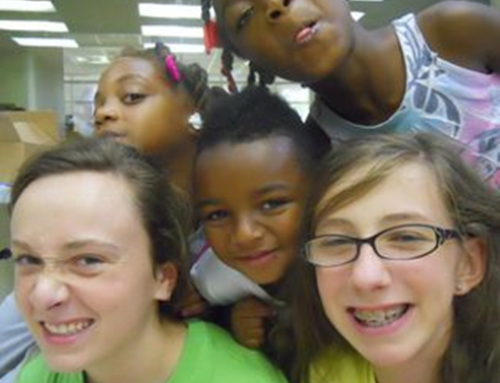We can learn a lot by reflecting on the patterns that have emerged in our lives.
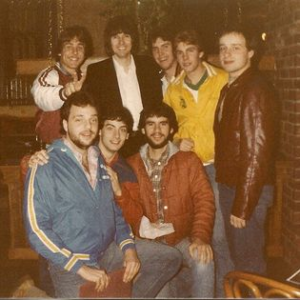 They can reveal our penchants, our likes and dislikes, as well as our strengths and weaknesses. Or, as in my case, they may indicate lessons that we still need to learn.
They can reveal our penchants, our likes and dislikes, as well as our strengths and weaknesses. Or, as in my case, they may indicate lessons that we still need to learn.
Imagine my surprise during my freshman year at Central Bible College (CBC), when Pastor Bill from Brooklyn was our chapel speaker. Déjà vu. Once again, his message moved me just as it did when I had heard him speak at my home church several years earlier. His message was similar. He shared stories about his ministry to under-resourced children of color in his Bushwick neighborhood in Brooklyn. Every weekend, his buses picked up five-thousand children who were excited to go to Sunday school. But then he spoke of the dangers that lurked in the ‘hood: drugs, vandalism, and violence. Once again, that was where he lost me.
He reminded us of Jesus’ words: “The harvest is plentiful, but the laborers are few; therefore, pray earnestly to the Lord of the harvest to send out laborers into his harvest.” (Matt. 9:37b, 38 ESV). That I was willing to do: “Please, Lord, send someone else.” I didn’t realize that Jesus was inviting his followers to be the answer to their own prayers.
Jesus implies that after seeing the need and praying for someone to go, his followers would develop a sense of urgency and go themselves. That this was Jesus’ intention becomes obvious, since in the very next verse he calls twelve of those praying followers to become his disciples and to go with him into the harvest. The twelve disciples had become the answer to their own prayers.
Pastor Bill spoke at chapel again my sophomore year: similar message; identical response.
Although CBC was more than 1,000 miles from my hometown, more than two-dozen of my classmates were from the Rochester area. We Rochesterians became the Pastor Bill “groupies” on campus. He had a uniquely hoarse voice, probably from speaking without an adequate sound system for many years. My Rochester cohort would recite Pastor Bill quotes around campus, imitating his speech and mannerisms. “And there was danger all around,” was one of our favorite quotes.
His message moved all of us, but only one of my friends went to the “harvest” in Bushwick, Brooklyn. Upon graduation, my roommate Chad ministered there for several years, before moving to downtown Indianapolis to start a similar ministry there. The rest of us were content to encourage others to go to the ‘hood, in our raspy Pastor Bill voices.
I may not have gone to Brooklyn, but part of my heart did. I began to think about the poor more often. Although invisible to me prior to Pastor Bill’s messages, I began noticing that taking care of the poor was a major biblical theme. I observed that Gospel of Luke had a strong message about taking care of the poor. Luke is the only Gospel that records Jesus’ proclamation that God had anointed him “to proclaim good news to the poor.” (Luke 4:18, ESV).
I also noticed that in the book of Acts that one of the responsibilities the church took very seriously was taking care of their poor (Acts 2:44, 45; 5:34, 35; 6:1-7). I also noticed that raising an offering for the poor in Jerusalem was a major aspect of Paul’s missionary journeys (Acts 11:29, 20:35; 24:17; cf. Romans 15:25 – 27; I Corinthians 16: 1 – 3; 2 Cor 8:1 – 4; 11 – 15; 9: 6 – 13; Galatians 2:10). The writings of Luke, Acts, and the Apostle Paul became a lifelong study for me.
During my freshman year, my friend, Dan, from Ohio volunteered to be an assistant pastor in restart church in inner-city Springfield. The church met in an abandoned church building, Eagle Heights Assembly of God. It was located in one of the poorest sections of town. A retired AG minister initiated the effort. This poor neighborhood was almost all white, because Springfield, Missouri was nearly all white. Even today, Springfield is 88% white.
I decided to visit Eagle Heights one Sunday morning when Dan was preaching. There may have been 20-or-so adults there, with five or six of them being CBC students. Except for the pastor and his wife, the rest of the congregation were poor families from the neighborhood. My friend did a great job delivering the message, foreshadowing that he would later become a homiletics professor at a northeastern Bible college. I visited Eagle Heights several more times. Not because of my friend Dan, however, but because there was a young lady who captured my attention.
This young lady started a children’s church at Eagle Heights. Every Sunday morning, she would drive the church van to pick up a handful of precious ragamuffins and bring them to church. I decided to attend children’s church to observe her working her magic with these children. It was obvious that she cared about these kids and they reciprocated. She had won them over. She won me over as well. Her name was Kris.
Although I liked Dan, Kris, and my CBC friends who attended Eagle Heights, I didn’t feel comfortable there. I had nothing in common with those families. I began to look for another church that had people who were more like me.
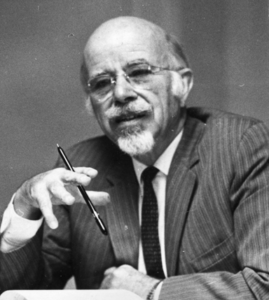 According to MacGavran, the homogenous unit principle is that “members of a homogeneous unit think of themselves as enjoying a common bond of unity, simultaneously feeling different from other.” The basic idea is that we prefer to be with people who are like us. The very reason I had left Eagle Heights Church.
According to MacGavran, the homogenous unit principle is that “members of a homogeneous unit think of themselves as enjoying a common bond of unity, simultaneously feeling different from other.” The basic idea is that we prefer to be with people who are like us. The very reason I had left Eagle Heights Church.
Sadly, just as denominational segregation was officially ending in white evangelical churches in the early 1960’s, the homogenous unit principle came in to replace it by the early 1970’s. It was segregation by another name. “Déjà vu all over again,” as Yogi Berra famously quipped.
Based on MacGavran’s observations in India, the churches that thrived and grew were the ones which were made up of the same caste. After the publication of “The Bridges of God,” other missiologists began to identify similar patterns across other cultures. Regardless of the continent, country, or culture, churches grew most rapidly when the congregations were homogeneous.
The principles of the church growth movement are credited with the rapid emergence of Megachurches across the U.S. during the early 1980’s and 1990’s. Prior to this time, Megachurches were quite rare. Due to its apparent success, church growth principles began to be taught in nearly every Evangelical seminary and Bible college in the US, including my own.
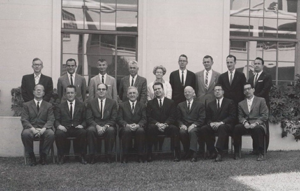 The insights from the church growth movement helped to launch the “church planting movement.” Pastor Rick Warren’s Saddleback Church was a vanguard of the church planting movement. The first question that Warren asked was, “What is the fastest growing community in the United States?” At the time, it was Orange County, California. After identifying the location, he identified his homogenous unit and named him “Saddleback Sam.”
The insights from the church growth movement helped to launch the “church planting movement.” Pastor Rick Warren’s Saddleback Church was a vanguard of the church planting movement. The first question that Warren asked was, “What is the fastest growing community in the United States?” At the time, it was Orange County, California. After identifying the location, he identified his homogenous unit and named him “Saddleback Sam.”
Saddleback Sam was “A well-educated young urban professional … [he] is interested in health and fitness … but is overextended in time and money and is stressed out. He carries a lot of debt, especially due to the price of his home. He is married to Samantha, and they have two kids, Steve and Sally.”
As a result of Warren’s phenomenal success, future church-planters began to look for fast growing communities in which to start their new churches. The church planting movement intentionally targets growing affluent communities, which improves the odds of success for new church startups. Needless, to say, Bushwick, Brooklyn, would not be circled on any aspiring church planter’s map. Whereas, Jesus targeted the poor and marginalized, the church planting movement targets the prosperous and well-connected. The focus on homogeneity ensures that never the twain shall meet.
The success of Saddleback Church and its church planting model ensured that church planters would pay close attention to the homogenous unit principle. After identifying where they would plant the church, they too would identify their “Saddleback Sam.” The people who attend these new church plants shared a common culture, values, economic status, and even political beliefs.
One tenet that the church growth movement and church planning movement share is that pastors should never preach anything that their congregation would consider controversial. Feel free to preach on topics that mirror your congregation’s existing values, but never challenge their values. That would make them feel uncomfortable. This preaching principle precludes pastors from addressing endemic cultural sins commonly found in the church, such as individualism, materialism, or tribalism. Here, church growth principles appear to run afoul of the principles necessary to promote individual spiritual growth.
The goal of the church growth movement is to get people to come to church, not to help them become transformed. HUP has inadvertently created consumer “Christians” who will merely take their “business” elsewhere if they don’t like what they hear on Sunday morning.
So, I argued with my professor that the HUP was exclusionary and blatantly unchristian. I asked him who will reach the poor? Who will go into our cities, using this model? Shouldn’t we love and reach out across racial and economic lines. His retort was, “Try growing a church without HUP.” For him, utility trumped ethics. For church growth practitioners, it was enough that the principles worked. They never thought to question HUP’s morality.
The Sunday following our discussion, I attended my nice, white, middle-class church . . . where I felt comfortable sitting next to people just like me. In theory I was against the HUP, but in practice I was living it. The gap between my theory and practice still hadn’t dawned on me yet.
I would need a few more lessons.
In my junior year, I convinced Kris to go to come with me to my nice homogenous church in Springfield. With the words of Pastor Bill still echoing in my soul, she and I started a van ministry to children who lived in a poor white neighborhood nearby. Every Saturday, we would visit an apartment complex. We would bring the children lunch. I would play basketball with them, then Kris would tell them a Bible story.
Every Sunday, we would pick them up in a van and bring them to church. Poor children, regardless of their race, behave a little differently than middle class children. Kids growing up in poverty are dealing with toxic stress. This stress is exhibited in their behavior. These poor, white children had the typical behavioral issues you find when dealing with children growing up in poverty. Unsurprisingly, we often heard that their Sunday-School teachers were less than thrilled to see them attend on Sunday mornings. These kids were not like their kids.
One Sunday, we invited one of the moms to come to church with us. After dropping off all the children into their respective Sunday School classes, Kris and I would typically arrive in the sanctuary after the service had started. In order not to make a nuisance of ourselves, we always slipped into the balcony.
This Sunday, we noticed that our guest was not greeted as she reluctantly entered the sanctuary. Her clothes gave away her economic status. She was obviously uncomfortable, and that no one engaged her only made it worse. When it was time for everyone to shake hands and greet our pew neighbors, no one shook her hand. She stood there as a solitary, out-of-place figure. When the singing resumed, she sat all alone in her pew. Only in our early 20s at the time, it never dawned on us to make our way downstairs to sit with her. We merely wondered why no one else had.
My discomfort with attending Eagle Heights Church, and a middle-class church’s inability to engage poor children or a single mom, demonstrates the pernicious power of the homogenous unit principle.
What makes the HUP even more troubling is that it has become orthopraxy among most of the largest and fastest growing churches in America. Although communities in U.S. cities tend to be hyper-segregated, to degrees very similar to that of Springfield, Mo., churches are much worse. American churches are 10 times more segregated than the neighborhoods in which they reside (Emerson, 2010 Rice University Survey).
Tribalism is natural. If we remain ignorant of our unconscious biases, we will forever remain prisoners our homogenous groups, trapped by our own tribes. Only by awareness and intentionality can we change this. Today, unfortunately, tribalism has been enshrined as a necessary strategy for church growth. This practice has led to the predictable result, that churches are 10 times more segregated than their respective neighborhoods. As a result of embracing the HUP, churches don’t merely reflect societal segregation, they are its leading force.
It has often been said that Sunday is the most segregated day of the week. That this is a well-known truism demonstrates that the church has elevated the homogenous unit principle above Jesus’ command to love our neighbors. Jesus actually expands this command — going beyond loving our neighbor to loving our enemy. (Luke 6:27)
Jesus’ words include all those outside our tribe: including our poor, black, brown, immigrants, atheists and even our liberal neighbors — but it’s impossible to love someone whom you make sure you will never see.
The hyper‑concentrated homogeneity leads to cultural division. These cultural divisions lead to polarization. All of us are its unwitting victims. These divisions ultimately cause harms. Healing those harms will require that we leave our comfort zones, that we go beyond our own tribes. Defying tribalism requires great effort.
So, how do we move from being a segregated society and having homogenous churches to what Martin Luther King described as integrated “Beloved Community?” What does loving those outside our own tribes look like? How can Churches be a vanguard of bridge‑building efforts that lead to love, understanding and peace between heterogenous groups?
Most importantly — what will be your next uncomfortable step towards loving others who are not like you?

